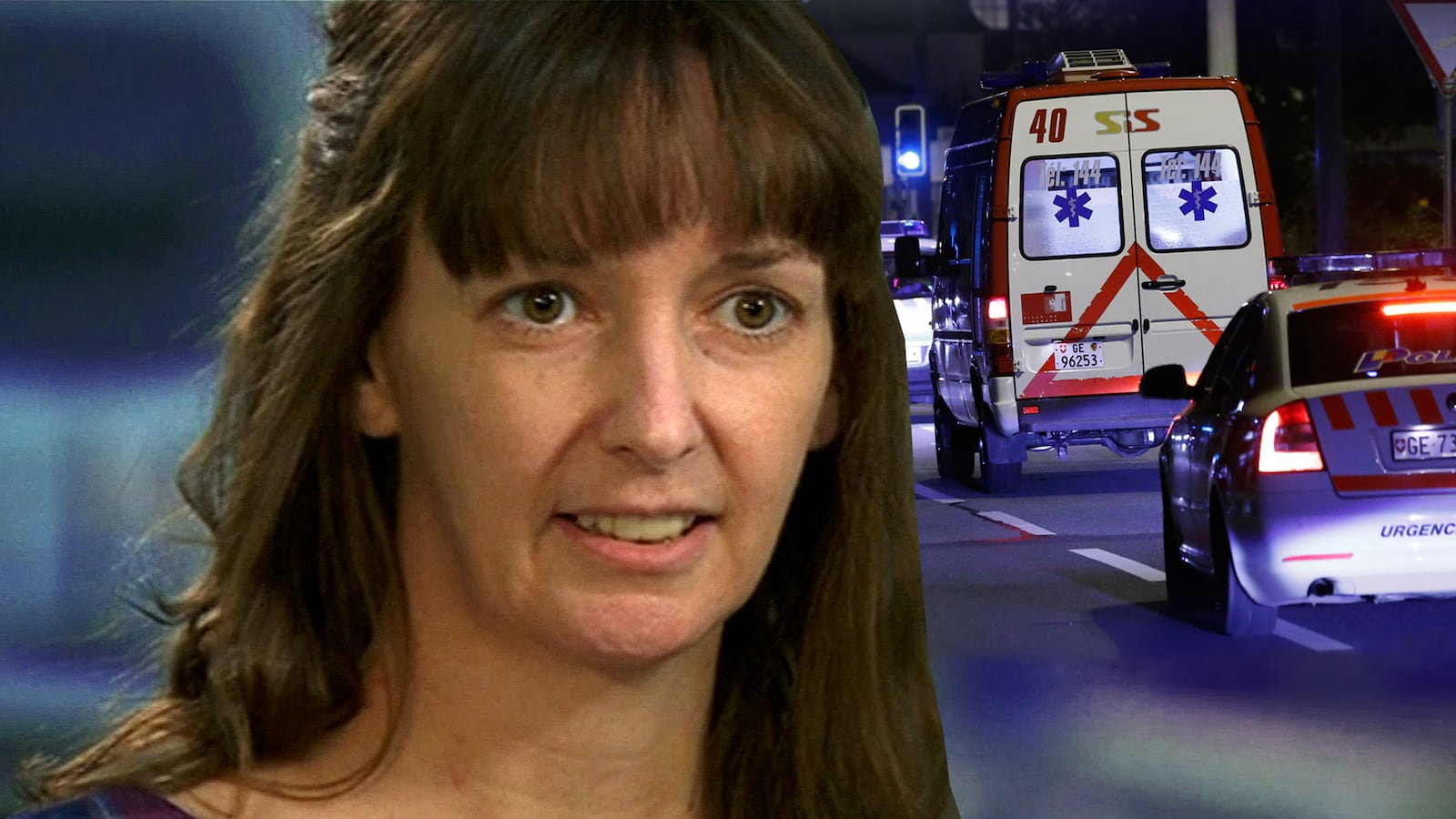Pauline Cafferkey, a Scottish nurse who survived Ebola in January after contracting it in Sierra Leone, is now tragically fighting for her life in a London hospital.
In the absence of even one similar story from the 17,000 survivors in West Africa, the case has been deemed an outlier. The label, based in truth, threatens to eclipse the bigger picture—that the end of an Ebola infection does not signal the end of the disease. Ebola, as further proven by studies this week, can remain in a survivor’s system for months—and often does.
Although its ability to linger has not proven life-threatening, it’s been known to wreak havoc on an individual’s system, causing irreversible damage to the eyes, hair, skin, and nerves. It may have been nerve damage that launched Cafferkey’s new infection, with a report late Thursday from officials that she had been suffering from a severe central nervous system (CNS) disorder prior to getting sick.
Neurological issues, while unlikely to evolve into a deadly infection, are just one of many ways that Ebola continues to live on its victims. So while Cafferkey’s infection may be the exception, Ebola’s long-term weakening of survivors is too often the rule.
***
Despite the use of phrases like “fully recovered” and “cured,” the majority of those who survive an Ebola infection are left with a gruesome list of symptoms. Hair loss, joint pain, vision problems, and fatigue are some of the most common, as are sleeplessness, rash, and arthritis.
Neurological symptoms like forgetfulness and memory loss appear to be the most alarming—and, unfortunately, the most common. Dr. Anthony Fauci, director of the National Institute of Allergy and Infectious Disease (NIAID), is spearheading a study of the long-term effects in survivors with the help of officials in Liberia. He, like many, was surprised to learn of Cafferkey’s case.
“This is certainly an unusual event, if you look at the history of survivors in the three countries,” he tells The Daily Beast. “But is this an isolated event that will never happen again? No, I can’t say that.” Among the 17,000 survivors of the Ebola epidemic, which infected at least 28,000 people and killed 11,000, it’s a reaction he’s yet to see.
That’s not to say Fauci hasn’t witnessed the debilitating side effects the virus leaves in its wake. In his study PREVAIL III, the third phase of the “Partnership for Research on Ebola Vaccines in Liberia,” he’s taking a closer look at exactly that: the lives of the people who survived.
Teaming up with the Liberian Ministry of Health, Fauci’s team has already begun studying 1,500 survivors, plus 6,000 contacts of contacts. His goal is to enroll 7,500. The symptoms that he’s seeing through this project are not unlike the ones he’s observing in the two patients he treated on U.S. soil.
The 72-year-old Fauci, a 30-year veteran of NIAID, made news last year when he decided to treat two of the American Ebola patients—Nina Pham and another who remains anonymous—himself. On the phone Thursday, he doesn’t mention either by name, but instead refers to them as one who was “moderately sick” and another who was “extremely sick.”
More than a year into recovery, the effects of Ebola they’re experiencing resemble those of survivors in Liberia. “You talk to them now they have the same things,” says Fauci of his two previous patients. “Some neurological problems like memory, sleep, forgetfulness, skin manifestations, losing of hair, eye inflammation, joint aches, fatigue.”
Neurological damage is one of the most common symptoms Fauci’s seen, but never the kind that’s turned fatal. “When you look at survivors and their symptoms, a significant proportion have neurological symptoms—headaches, attention span, sleeping problems,” he tells The Daily Beast. “This signifies a variable degree of involvement in the central nervous system, but not something that leads to deterioration and death.”
Stuart T. Nichol, the Centers for Disease Control and Prevention’s Chief of Viral Special Pathogens, takes Fauci’s views on neurologic damage a step further and indicts it as the cause of Cafferkey’s illness. “This isn’t a recurrence of Ebola hemorrhagic fever; this is clearly a meningitis-like syndrome, a neurological syndrome, which is a result of the lingering of Ebola virus,” he told The New York Times, before reaffirming that this is incredibly rare.
His mention of meningitis is not completely out of the blue. Several studies from past outbreaks, albeit small, have mentioned this. One example is a study on 103 survivors from the 1995 Ebola epidemic in the Democratic Republic of the Congo. In the study, published in the Journal of Infectious Disease, researchers reportedly found major, but infrequent, neurologic symptoms that ranged from “episodes of confusion” to “bilateral blindness,” and even a few “convulsions or clinical signs of meningitis.”
If the general population is unaware of the lasting effects of Ebola on survivors, the health care world seems to be too. Cafferkey, who contracted Ebola in December while volunteering in Sierra Leone, reportedly went to an after-hours clinic on Monday concerned about an infection. According to her sister Toni, the doctor diagnosed it as a virus and sent her home. Whether or not the doctor asked for her history remains unclear.
The 39-year-old’s story began in December when she contracted Ebola while volunteering as a nurse in Freetown, one of the hardest hit cities in Sierra Leone. Her symptoms emerged upon landing at Heathrow Airport on December 29, 2014, after which she reportedly told airport officials she felt feverish.
When seven tests for the virus came up negative, officials let her continue to her flight to Glasgow—where, upon arrival, she tested positive for Ebola. As her conditioned worsened, she was transferred to London’s Royal Free Hospital. By January 4, she was deemed “critically ill.”
After two weeks in critical condition, Cafferkey unexpectedly made a turnaround and was released on January 25. The media declared that she’d made a “full recovery” and lauded Cafferkey’s bravery. She told reporters at the time she was “happy” to be alive. “I still don't feel 100 percent; I feel quite weak, but I'm looking forward to going home,” said Cafferkey.
Ten months later, Cafferkey’s nightmare has returned.
After being turned away from the clinic last Monday, Cafferkey reportedly remained “ill in bed” all of Tuesday. Now her family is arguing that, had doctors acted faster, her condition would not have reached this stage. “It is absolutely diabolical the way she has been treated,” Toni Cafferkey told The Guardian. “We don’t know if the delays diagnosing Pauline have had an adverse effect on her health, but we intend to find out. It has not been good enough.”
Three weeks before falling ill, Cafferkey was one of several aid workers to receive the “Pride of Britain Award” for her work fighting the Ebola epidemic in West Africa. In introducing the award, Prime Minister David Cameron called the outbreak “one of the most devastating epidemics of our generation” before thanking Cafferkey and her peers for helping to stop the spread.
In a TV interview a few days later, Cafferkey told an interviewer that during the outbreak she “tried to be stoical” but inside was “very frightened.” Asked whether or not she would go back to help she quickly uttered: “Absolutely.”






